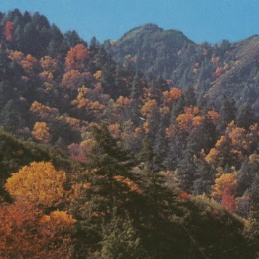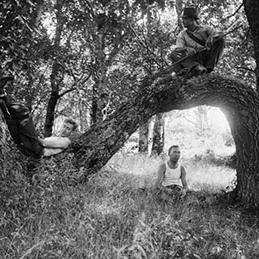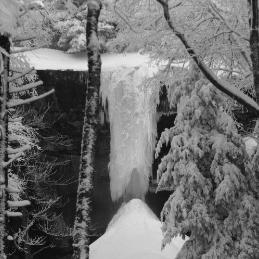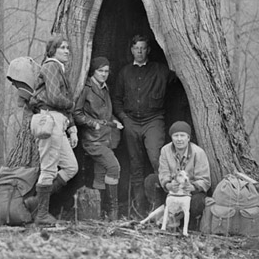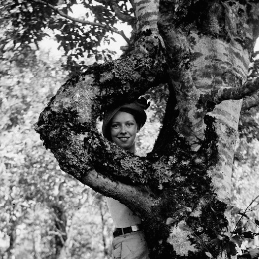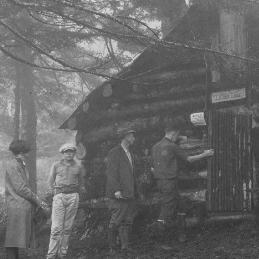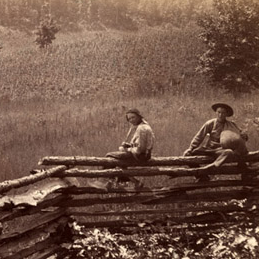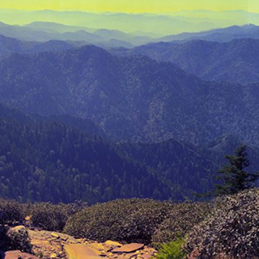Browse
Export 131 results:
Filters: Keyword is Fraser fir [Clear All Filters]
"Growth-trend Declines of Spruce and Fir in Mid-Appalachian Subalpine Forests." Environmental and Experimental Botany 25, no. 4 (1985): 315-325.
"Spectral Response and Spatial Pattern of Fraser fir Mortality and Regeneration, Great Smoky Mountains, USA." Plant Ecology 156, no. 1 (2001): 59-74.
"Application of Spherical Statistics to Change Vector Analysis of Landsat Data: Southern Appalachian Spruce-Fir Forests." Remote Sensing of Environment 74, no. 3 (2000): 482-493.
"Censuses of a Breeding Bird Population in a Virgin Spruce-Fir Forest on Mt. Guyot, Great Smoky Mountains National Park, Before and After Balsam Wooly Aphid Infestation." In Twelfth Annual Scientific Research Meeting, Great Smoky Mountains National Park. Johnson City, Tennessee: National Park Service, Southeast Regional Office, 1986.
"Changes in the Spruce-fir Avifauna of Mt. Guyot, Tennessee, 1967-1985." Journal of the Tennessee Academy of Science 66, no. 4 (1991): 207-209.
"Balsam Woolly Aphid in the Southern Appalachian." Journal of Forestry 77, no. 5 (1965): 1154-1158.
"Annotated List of Insects Infesting Bark and Wood of Fraser Fir." Journal of Economic Entomology 62, no. 1 (1969): 249-250.
"Microfungi of Forest Litter From Healthy American Beech, Fraser Fir, and Eastern Hemlock Stands in Great Smoky Mountains National Park." Southeastern Naturalist 8, no. 4 (2009): 609-630.
"Microfungi from Bark of Healthy and Damaged American Beech, Fraser Fir, and Eastern Hemlock Trees During an All Taxa Biodiversity Inventory in Forests of the Great Smoky Mountains National Park." Southeastern Naturalist 6, no. 1 (2007): 67-82.
"Variation in Overstory Nitrogen Uptake in a Small, High-Elevation Southern Appalachian Spruce-Fir Watershed." Canadian Journal of Forest Research 32, no. 10 (2002): 1741-1752.
"Distribution of Lactarius in the High-Elevation Forests of the Southern Appalachians." Mycologia 78, no. 1 (1986): 80-85.
The Tsuga Search Project: Documenting and Preserving Superlative Eastern Hemlock. Eastern Native Tree Society, 2007.
Effects of Fraser Fir Death On Population Dynamics in Southern Appalachian Boreal Ecosystem. Knoxville, TN: University of Tennessee, 1979.
"Survey of Diseases and Insects of Fraser Fir and Red Spruce in the Southern Appalachian Mountains." European Journal of Forest Pathology 19, no. 7 (1989): 389-398.
"Mortality Trends in a Southern Appalachian Red Spruce Population." Forest Ecology and Management 64, no. 1 (1994): 41-45.
"Fraser Fir Mortality and the Dynamics of a Great Smoky Mountains Fir-Spruce Stand." Castanea 53, no. 3 (1988): 177-182.
"Application of a Spruce-Fir Forest Canopy Gap Model." Forest Ecology and Management 20 (1987): 151-169.
"Red Spruce Dynamics in an Old Southern Appalachian Forest." Journal of the Torrey Botanical Society 131, no. 4 (2004): 337-342.
"Size-specific Mortality, Growth, and Structure of a Great Smoky Mountains Red Spruce Population." Canadian Journal of Forest Research 20, no. 2 (1990): 206-210.
"Estimation of Tree Replacement Patterns in an Appalachian Picea-Abies Forest." Journal of Vegetation Science 7, no. 5 (1996): 685-694.
"Gradient Analysis of Old Spruce – Fir Forests of the Great Smoky Mountains circa 1935." Canadian Journal of Botany 71, no. 7 (1993): 951-958.
Tertiary Elements of the Cove Hardwoods Forest of the Great Smoky Mountains National Park In Symposium on Biology of the Great Smoky Mountains National Park. Knoxville, TN: University of Tennessee, Department of Botany, 1938.
"Size-Frequency Characteristics of Abies Fraseri Pollen as Influenced by Different Methods of Preparation." American Midland Naturalist 31, no. 1 (1944): 232-236.
"Ecological Studies of the Vegetation of the Great Smoky Mountains: II. The Quadrant Method Applied to Sampling Spruce and Fir Forest Types." The American Midland Naturalist 16, no. 4 (1935): 566-584.
"A Multivariate Analysis of Forest Communities in the Western Great Smoky Mountains National Park." American Midland Naturalist 118, no. 1 (1987): 107-120.

